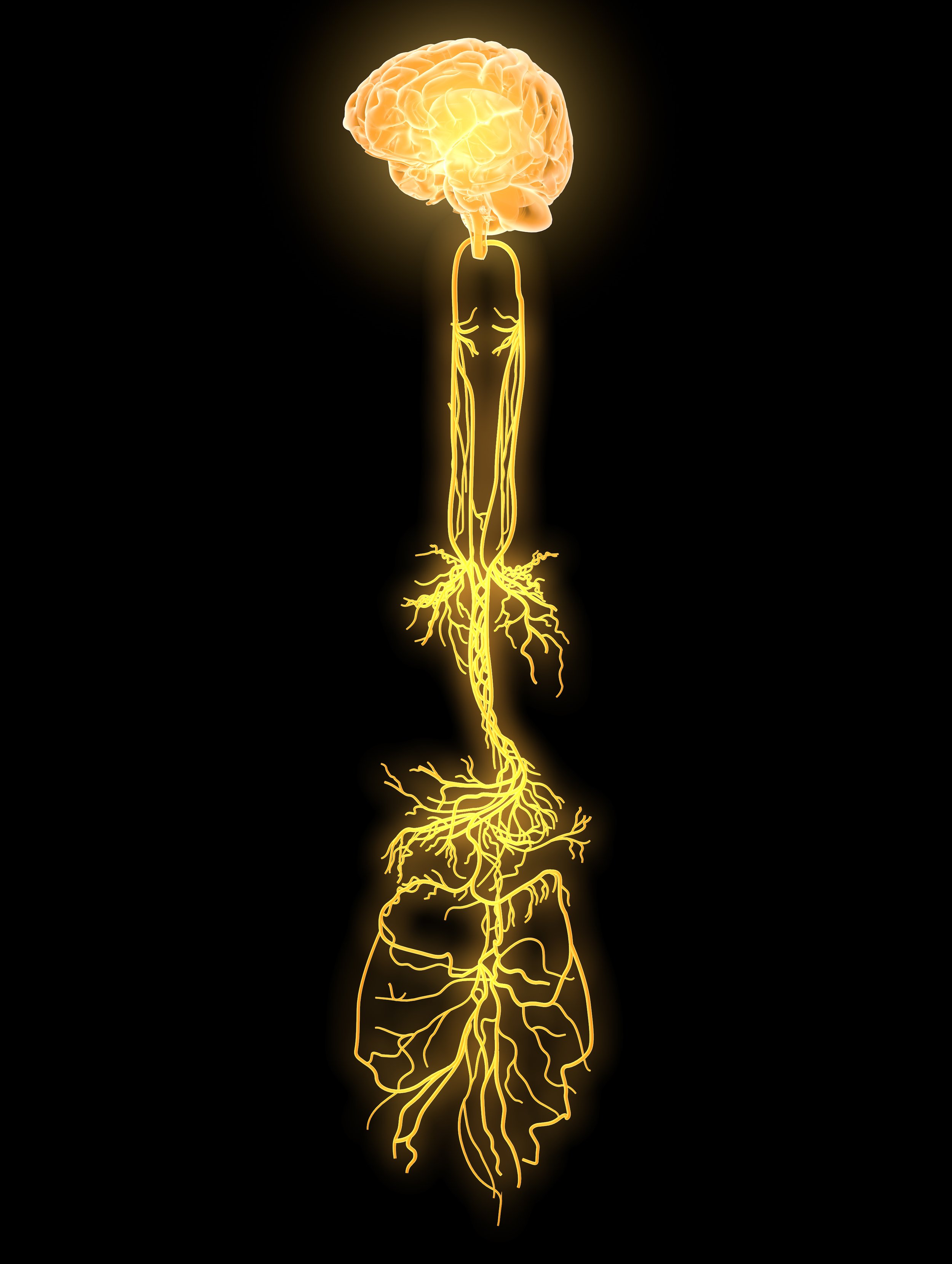POLYVAGAL THEORY:
Tracking the Vagus Nerve
The Vagus Nerve
The Vagus Nerve is our key emotional mediator, managing heartbeat, respiration, digestion, immunity, body temperature, and stress responses. It even holds influence over our beliefs, perception, and memory. Polyvagal Theory has uncovered the dynamic functions of the vagus nerve, coordinating the systems of our body like a vehicle’s timing belt.
Whatever emotion we are experiencing, the vagus nerve delivers us into these divergent physiological states according to our neuroception (non-conscious threat detection). For thousands of years, this nerve has been a neural watchtower of protection, a servant of cognitive directives, and a barometer of atunement with our bodily organ status.
Polyvagal Theory lives to prove that strong bi-directional communication between the brain and the vagus nerve is pivotal to all aspects of our lives.
Polyvagal Jedi Training
Building awareness of our physiological state is the key to resilience. Polyvagal Theory gives us agency to live in the physiological states most advantageous to our present circumstances. When we practice deliberate emotional control, we are training to become Jedi.
This practice accesses optimal nervous system performance, resulting in the conscious blending of our 3 basic emotional states: activation (sympathetic), internal and external connection (ventral vagal), and shutdown (dorsal vagal).
When we can efficiently blend activation and connection, Dr. Stephen Porges calls this “play”- the expression of healthy aggression. Blending grounded connection with a shutdown response (dorsal vagal), we can achieve deeply introspective states of creativity, curiosity, and connection.
Yoda calls it the “light side” of the force. Drummers, I am telling you - this is our jam!
But activating our threat responses without remaining grounded in connection is where Darth Vader turned to the dark side. He immersed himself in the volatile internal struggle between sympathetic activation and dorsal vagal shutdown. Over time, constant recruitment of activation and shut-down threat responses slowly and perniciously contaminates our bodies, minds, and relationships.
This is the “dark side” that inclined Darth Vader’s perception of environment and relationships as dangerous and malicious. Ungrounded activation and shutdown threat responses create an addiction to the energy of our stress hormones and exhaust our metabolic resources. Stress response addiction leads us away from human connection, health, and intention - toward the dark side.
Don’t let Darth Vader in your Dorsal Vagal. Be a Polyvagal Jedi. May the force be with you.
Neuroception
Dr. Stephen Porges first wrote about his invention, Polyvagal Theory, in 1993 and it continues to revolutionize our understanding of how our bodies respond to stress. Our Vagus Nerve performs non-conscious recognitions of safety, danger, or life threat four times per second. This is called Nueroception.
Outside of our conscious awareness, this threat reflex is capable of completely hijacking our emotions. Which is why bringing awareness to our physical cues of neuroception is vital for optimal performance and wellbeing. Polyvagal Theory translates the language of our nervous system and continues to grow and inform the robust work of so many interdisciplinary leaders in psychology, therapy, yoga, athletics, the arts, and now, Somatic Drumming.
The Polyvagal Ladder
We have all heard of the fight-or-flight stress response. It is only one position on the Polyvagal ladder. The ladder illustrates our emotional regulation spectrum with dramatic implications depicting how the Vagus Nerve governs our responses to social engagement and threat.
Movement up and down the ladder represent changes in our physiological rhythms and sensations: ventral vagal social engagement, sympathetic activated stress response, and dorsal vagal shutdown, the darkest of our emotional states.
Being aware of the cues of neuroception allows us to locate the ladder position of our physiological state. We can then execute Polyvagal neural exercises to move toward optimal regulated states which benefit both our performance and our health. Like an emotional GPS, we can see where we are and get directions to where and who we want to be.




